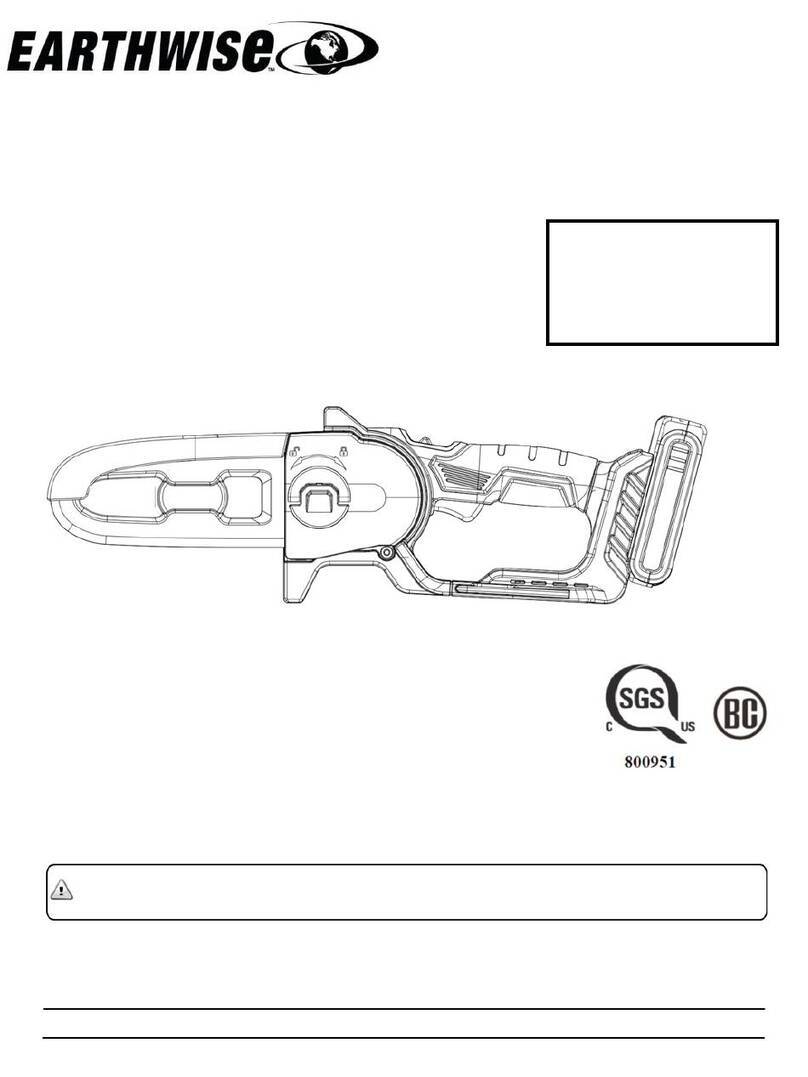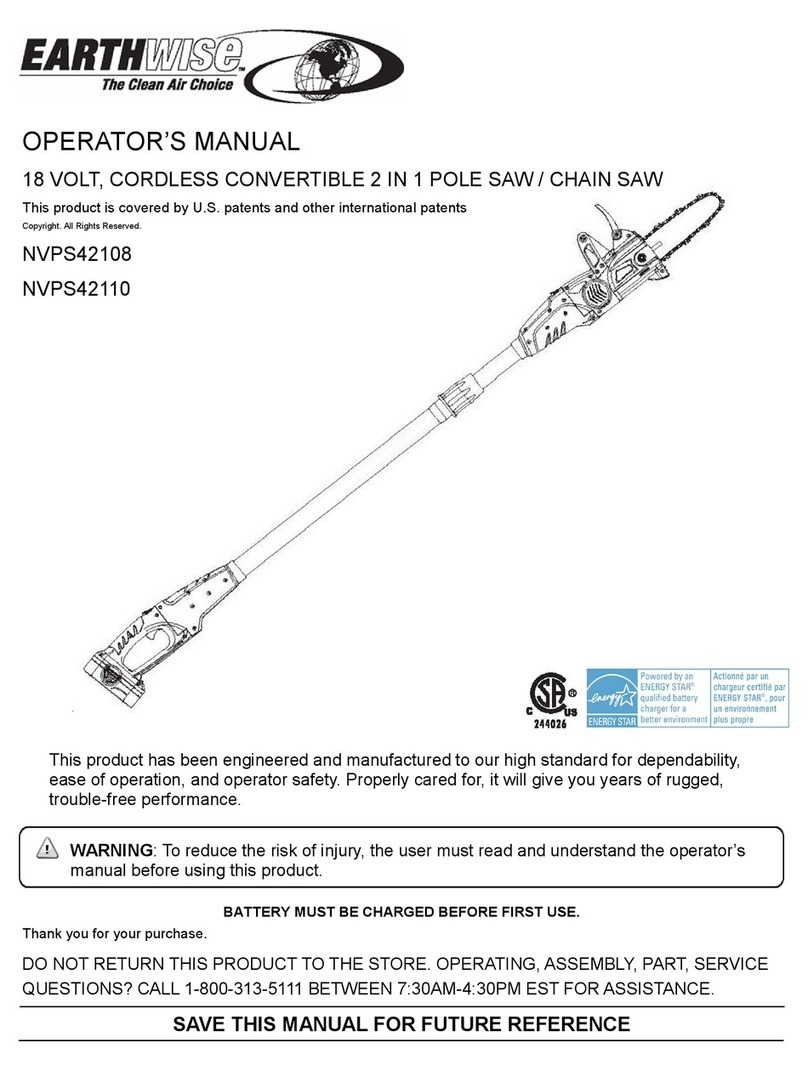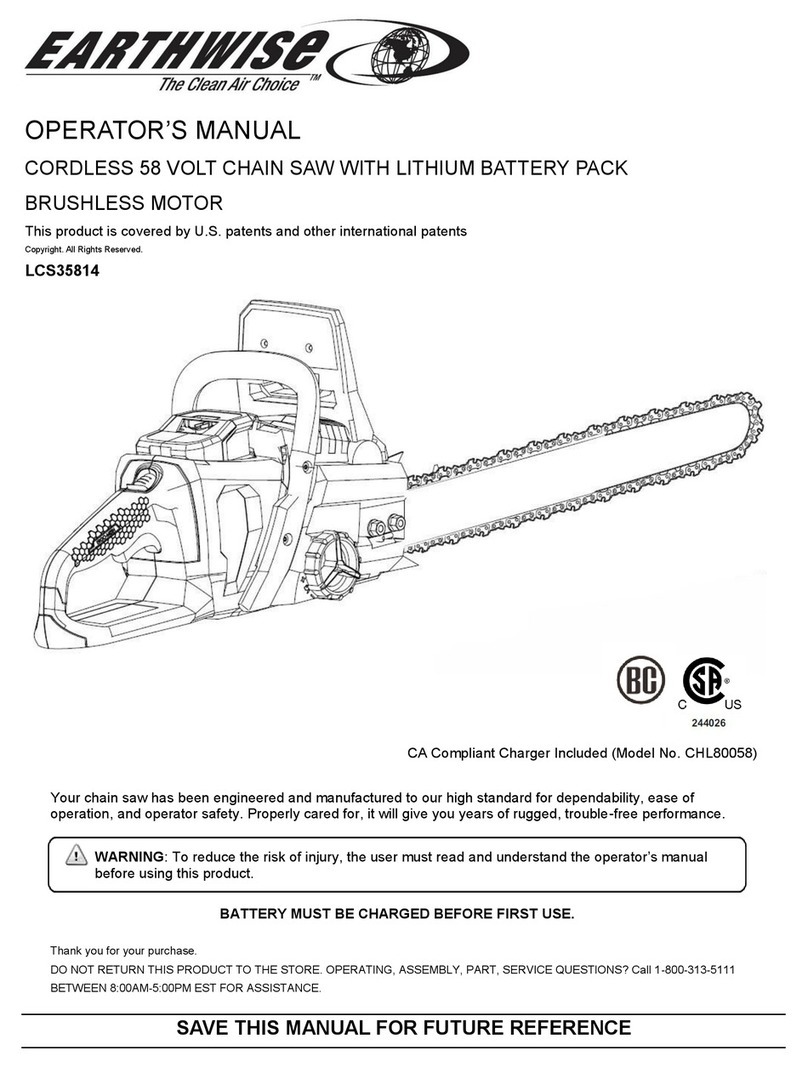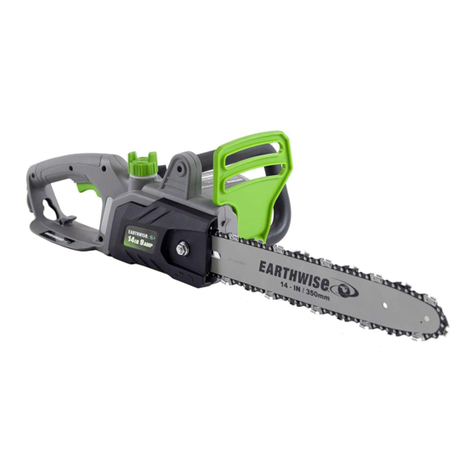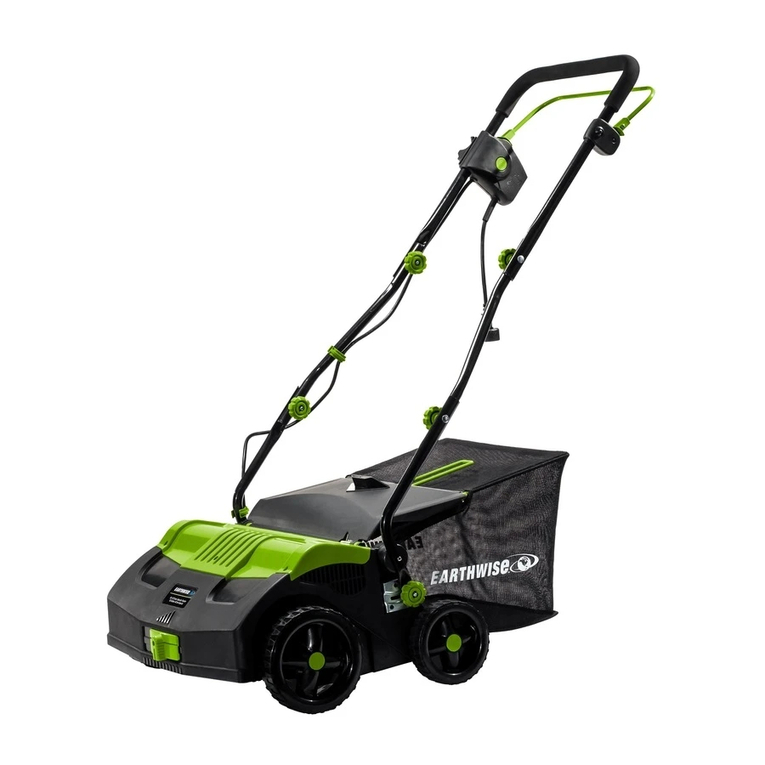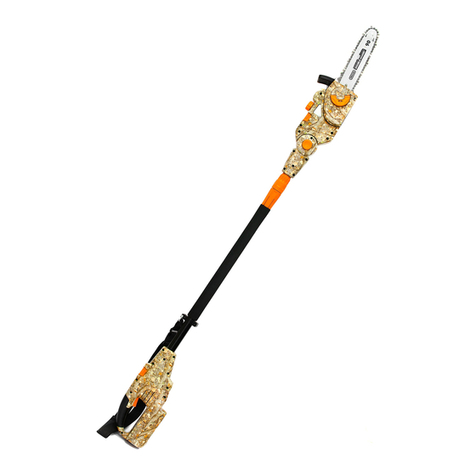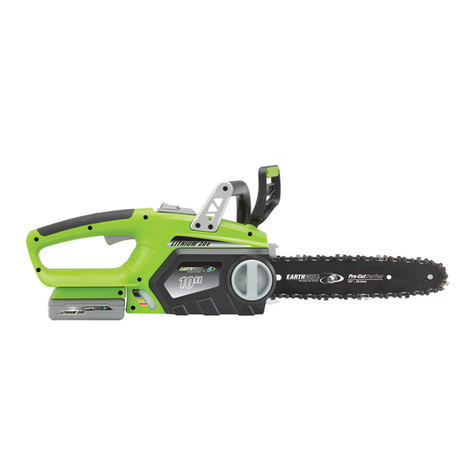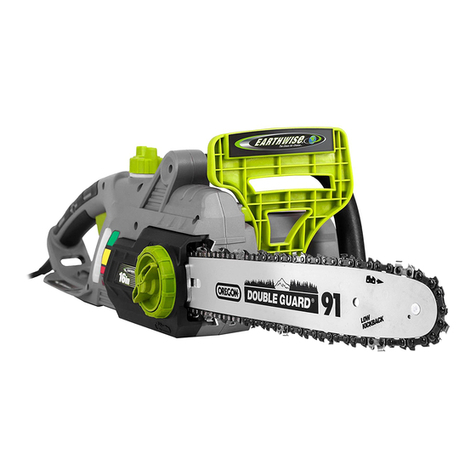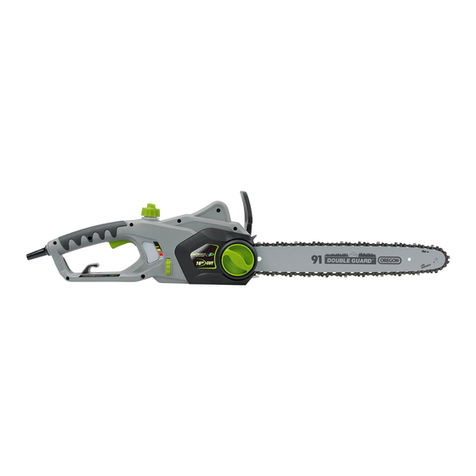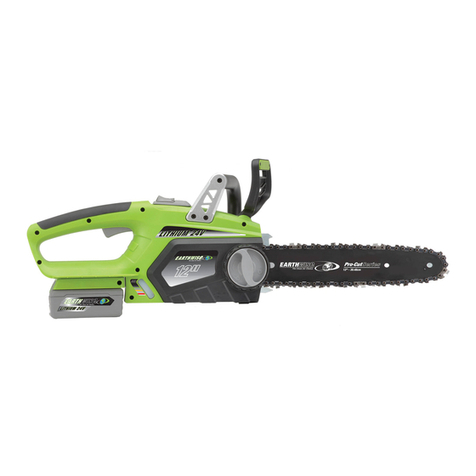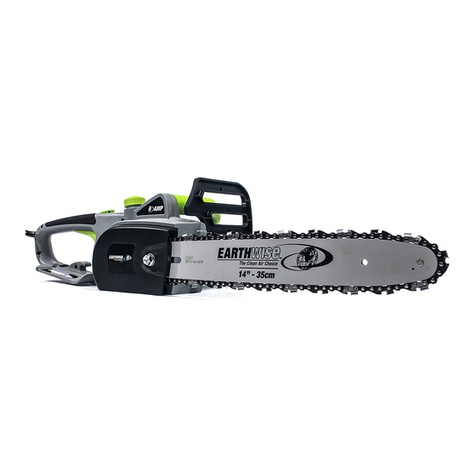I
OPERATING
CUTTING INSTRUCTIONS
ProperCutting Stance
Weight Should
be
balanced with both
feel
on solid ground.
Keep
lell
arm with elbow loelced in a "straight arm" position to
withstand any kickback force.
Your body should always beto the left of the chain line.
Basic Cutting Procedure
Small trees up to 6-7inches in diameterare usually cut
In
a single
cut
Large trees require notch cuts. Notch cuts determine the
direction the tree will fall.
WARNING:
If
the tree starts to fall in
the
wrong direction,
or
if
the
saw gets caught or hung up during the fall, leave the sawand
save yourself.
WARNING: PeriodiCally glance
at
the top ofthe tree during the
back-cut to assure the tree is going to fall in
lIle
desired direction.
Practice culling a few small logs using thefollowing technique
to
Ihe "feel" of using the saw before you begin a major sawing
Take the proper stance in front of!he wood with the saw
oft
the trigger and letthe chain accelerate to full speed
entering the
cut
Hold the saw finnly with both hands. keep your left hand
on
the tronl handle and your right hand
rear
hand~e
so
that
yourbody is to the left of the chain line.
Keep the unit running the
entine
time you are cutting, maintain a
steady speed.
Allow the chain to cut for you; exert only light downward pressure.
Ifyou force the cut, damage
to
the bar,
Chain,
or unit can result.
Do not put pressure on the saw at the end ofthe cut.
When felling a Iree, keep everyone a safe diSlance from the
cutting area. During felling operations, the safe distance should
be
at
leasttwice the height ofthe largest trees
in
the felling area.
If
the tree makes contact with any utility
Ii
ne, the utility company
should be notified immediately.
Always cut with both feet on solid ground to prevent being pulled
off balance.
Do not cut above chest height,
as
a saw held higher
is
difficult
to
control against kickback forces.
WARNING: Check the tree for damaged
or
dead branches that
could fall and M you during felling.
WARNI
NG:
Do
not cut trees near electrical wires
or
buildings.
FELLING A TREE
When
buc~;ng
and felling operations are being perfonmed by two
or
more persons, at the same lime, \he felling
operaton
should be
separated from the bucking operation
by
a distance of
at
least
twice the height of the tree being felled. Trees should not befelled
in a manner thal would endanger any person, striKe any utility line
or
cause any property damage.
~
the tree does
mak~
contact
with
any utility line. the utility company should be notifted immediately.
Before any cuts are started, pick your escape route (or routes
in
case the intended route is blocked); clear the immediate area
around the tree and
make
sure
there
are no obstructions in your
planned path of retreat. A clear path of
safe
retreat
is
approxi-
mately 135 planned line offall. The retreat path
should diagonally to the rear of the expected line
of
fall. r
Before felling is started. consider the force and direction of the
wind,
the
lean and balance of the tree, and the locanon of large
limbs. These things influence the direction in which the tree will
fall.
Do
not try to fell a tree along a line different from its natural
line offall.
The chain saw operator should keep on the uphill side
of
the
terrain
as
the tree is likely
to
roll orslide downhill after
it
is felled.
Remove
dirl
loose bark, nails, staples, and wire from the
tree where felling are to be made.
NOTCHED UNDERCUT
-Cut
a notch about
113
diameter of the
tree, perpendicularto the direction
of
the fall. Make the cuts of
the notch
so
tney intersect
at
a right angleto the line offall. This
notch should be cleaned out
to
leave a straight line.
To
keep the
weight
of
the wood offthe saw,
a~vays
make the lower
cut
of
the
notch before the uppercut.
WARNING: Do not fell trees during periods of high wind or
precipitation. Wait to do your cutting until the hazard has
WARNING: Do not cut down trees hallirg
an
extreme lean orlarge
trees that have rotten limbs, loose bark, or hollow trunks. Have
these trees pushed or dragged down with heavy eqUipment, then
cutthem
up.
FELLING BACK-CUT
The back-cut is always made level and horizontal, and
at
a
minimum of2 inches (5cm) above the horizontal cut of the notch.
Nevercut through to the notch. Always leave a band
of
wood
between the notch end
back",ut
(approximately 2 inches (5cm)
or
1/10
the
diameterof the tree). This is called "hinge"
or
"hinge
wood." It controls the fall of the tree and prevents slipping or
twisting or shoal-back
Of
the tree
off
the stump.
On large diametertrees, stop the back cut before a is deep
enough
for
the tree toeitherfall or settle back
on
!he stump.
Then inser! soft wooden
or
plastic wedges into the cut so they do
not touch tl'le chain. The wedges can be driven in, little
by
little,
to
help
jack
the tree over.
